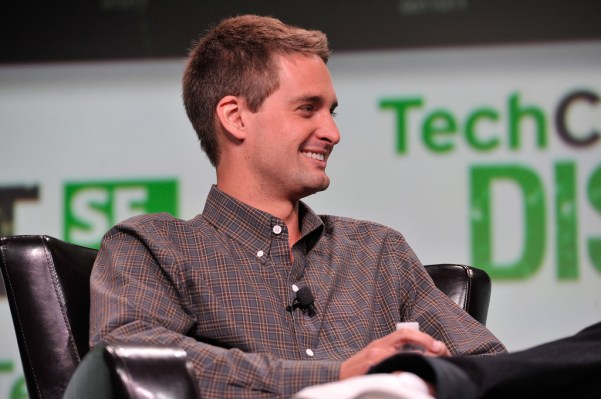Snapchat CEO Evan Spiegel has been known to be pretty surreptitious when it comes to sharing secrets about how the company works, but today he provided a little more transparency around its mission and how it thinks about the communications that users send through the app.
At the AXS Partner Summit, he gave a fascinating keynote speech (which you can read here), breaking down the things that make Snapchat work, most notably how the concepts of Internet everywhere, fast and easy media creation, and ephemerality combine to power the app. The speech was presented to media execs perhaps as a way to help them understand Snapchat’s appeal, and the new ways that people are using it to communicate with each other.
To start, Spiegel noted that he thought it was strange that people refer to this period as the “post-PC era.” If anything, he argues, the proliferation of smartphones that began with the launch of the iPhone means that we’ve entered an age in which our computing devices are more personal than ever before.
And so he believes we’re in the age of the “More-Personal Computer.”
So what can we do with that? Pervasive connectivity, the ability to quickly create media, and an increased interest in ephemerality, combined together is, in a sense, what makes Snapchat Snapchat. But the combination of those elements also means that today’s users are sharing and communicating in different ways than they ever have before.
Take the concept of “Internet Everywhere,” for instance. Once upon a time, people who shared photos or videos of themselves or places that they’ve visited ended up taking a whole lot of media, sorting through it to determine what they’d want others to see, and then having to upload it later to the social networks, blogs, and other places that they’d share.
“Internet Everywhere means that our old conception of the world separated into an online and an offline space is no longer relevant. Traditional social media required that we live experiences in the offline world, record those experiences, and then post them online to recreate the experience and talk about it,” Spiegel said.
But constant connectivity means there’s no longer a disconnect between when media is taken and when it could be shared. Or, as Spiegel said, “We no longer have to capture the ‘real world’ and recreate it online – we simply live and communicate at the same time.”
That also enables its users to more immediately share self portraits, which Spiegel calls “arguably the most popular form of self-expression.” Centuries ago, those self-portraits required untold hours and brush strokes, but in today’s day and age of fast and easy media creation, people can communicate through media instead of around it.
“The selfie makes sense as the fundamental unit of communication on Snapchat because it marks the transition between digital media as self-expression and digital media as communication,” he said.
With that in place, the final piece — ephemerality — works to focus on the feeling that content brings to the user, not what it looks like. For Snapchat, that more closely resembles the way that conversations happen in real life, the way that people actually communicate with each other.
“That’s what Snapchat is all about. Talking through content not around it. With friends, not strangers. Identity tied to now, today. Room for growth, emotional risk, expression, mistakes, room for you,” he said.
The embrace of the Ephemeralnet comes in stark contrast to the previous generation of social networks, in which what people shared was forever tied to their online identities. Those communications are happening anonymously, or they happen in real time and disappear.
For now, Snapchat is the most successful app in this new environment of pervasive connectivity and real-time communication. But we’ll no doubt continue to see more social networking and messaging apps use the same concepts.
You can check out the full text of the speech below:
http://www.scribd.com/doc/202195145/2014-AXS-Partner-Summit-Keynote
